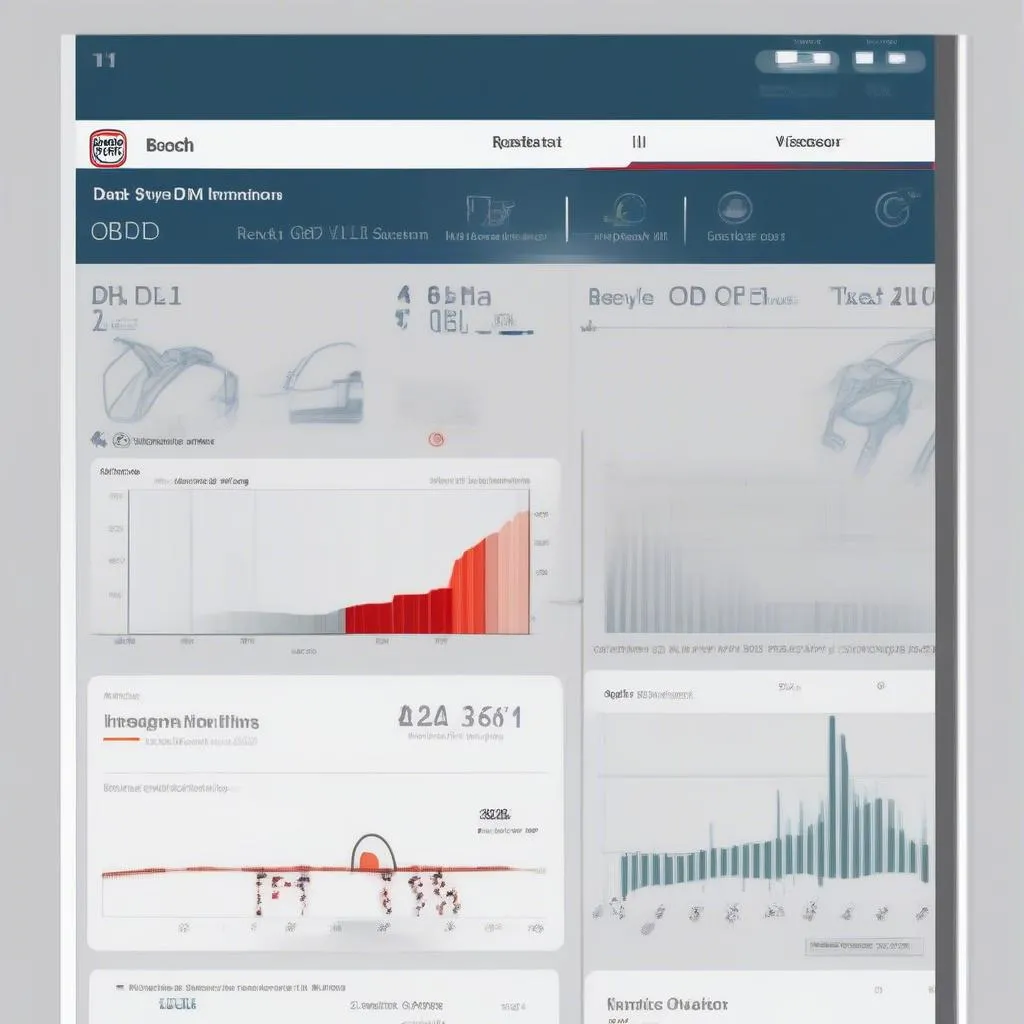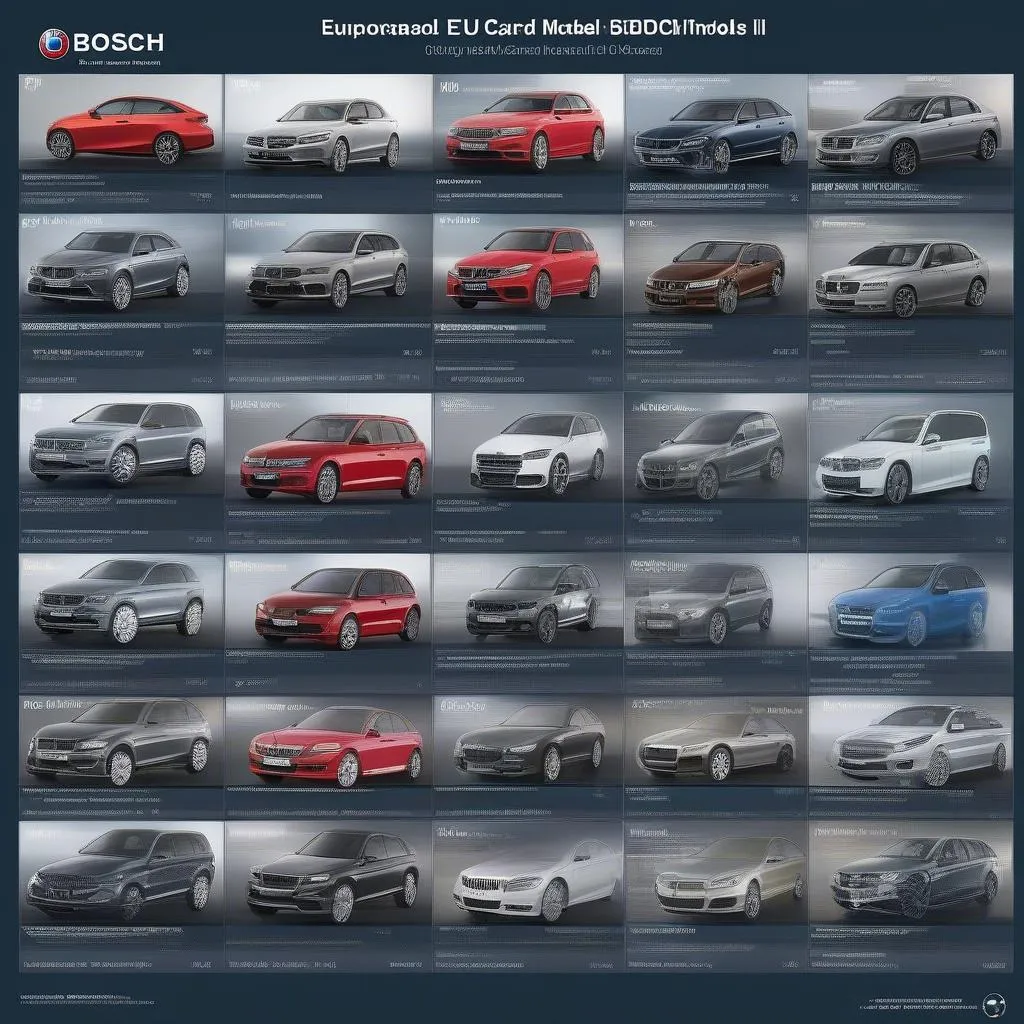Have you ever found yourself staring at a dashboard warning light, wondering what it means? Or perhaps you’re a mechanic looking for a reliable tool to diagnose complex electronic issues in European vehicles? The Bosch Enhanced OBD I & II scanner is a powerful tool that can be the answer. This diagnostic tool provides a deep dive into your car’s systems, helping you to understand and resolve a wide range of issues. Let’s delve into its capabilities and explore how it can benefit you.
Understanding Bosch Enhanced OBD I & II Scanners
The Bosch Enhanced OBD I & II scanner is designed for professionals and car enthusiasts alike, offering comprehensive diagnostic capabilities for European vehicles. This tool goes beyond basic OBDII diagnostics, providing a richer understanding of your car’s systems through advanced data analysis and real-time data streams.
Why is Bosch Enhanced OBD I & II Important?
For Mechanics:
- Faster and more accurate diagnoses: This scanner empowers mechanics to quickly identify the root cause of issues by providing detailed information about the car’s systems, reducing guesswork and saving time.
- Comprehensive analysis: The scanner can access a wide range of data, allowing mechanics to delve into complex electrical systems, identify faults, and provide effective repairs.
For Car Enthusiasts:
- Gain valuable insights: The Bosch Enhanced OBD I & II scanner can provide you with real-time data about your car’s performance, allowing you to monitor engine parameters, fuel consumption, and more.
- Potential cost savings: By proactively identifying and addressing potential issues, you can prevent costly repairs down the road.
Key Features of the Bosch Enhanced OBD I & II Scanner:
- Data Logging: Records data from various sensors and systems, allowing you to track trends and identify intermittent issues.
- Live Data Streams: Displays real-time data from the engine, transmission, ABS, and other systems.
- Fault Code Retrieval and Clearing: Retrieves and clears fault codes stored in the vehicle’s memory, providing valuable insights into the vehicle’s health.
- Extensive Vehicle Coverage: Supports a wide range of European vehicles, including popular brands such as BMW, Mercedes-Benz, Audi, Volkswagen, and more.
- User-Friendly Interface: The scanner offers a clear and intuitive interface that is easy to navigate, making it accessible to professionals and DIY enthusiasts.
Bosch Enhanced OBD I & II: A Deep Dive into its Capabilities
Let’s explore a real-world scenario. Imagine you’re driving your BMW 3 Series and notice a strange misfire in the engine. You pull over and connect the Bosch Enhanced OBD I & II scanner. The scanner immediately retrieves fault codes, indicating a potential issue with the ignition system.
The scanner’s live data streams display real-time readings from the ignition coils. You notice one coil’s readings are erratic, suggesting it may be faulty. By logging this data over a period of time, you can confirm that the ignition coil is the problem.
This information allows you to quickly pinpoint the source of the misfire and replace the faulty coil, ensuring your BMW runs smoothly again.
To get a better understanding of the data you’re looking at, it can be helpful to visualize it. Here’s what a typical data stream might look like from a Bosch Enhanced OBD I & II scanner:  Visual Representation of Data Stream from a Bosch Enhanced OBD I & II Scanner
Visual Representation of Data Stream from a Bosch Enhanced OBD I & II Scanner
FAQ: Bosch Enhanced OBD I & II
Q: What is the difference between OBD I and OBD II?
A: OBD I (On-Board Diagnostics I) is the older standard, primarily used in vehicles manufactured before 1996. OBD II is the newer standard, implemented in vehicles produced after 1996. The Bosch Enhanced OBD I & II scanner covers both standards, providing comprehensive diagnostic capabilities for a wider range of vehicles.
Q: How do I connect the Bosch Enhanced OBD I & II scanner to my car?
A: The scanner typically connects to your car’s diagnostic port, usually located under the dashboard, near the steering column. A simple plug-and-play connection makes it easy to get started.
Q: What type of information can I access with the Bosch Enhanced OBD I & II scanner?
A: You can access a wealth of information, including engine parameters, fuel consumption, emission data, sensor readings, and more.
Q: Is the Bosch Enhanced OBD I & II scanner compatible with all European vehicles?
A: While the scanner supports a broad range of European vehicles, it is important to check the compatibility list for your specific car model. You can visualize the different vehicle models supported by the Bosch Enhanced OBD I & II scanner in the image below:  European Car Models Compatible with Bosch Enhanced OBD I & II Scanner
European Car Models Compatible with Bosch Enhanced OBD I & II Scanner
Q: Can I use the Bosch Enhanced OBD I & II scanner to reset my car’s service light?
A: Yes, the scanner can be used to reset service lights and other warning lights.
Q: Is the Bosch Enhanced OBD I & II scanner a DIY-friendly tool?
A: While the scanner is user-friendly, some advanced features may require technical knowledge. For beginners, it’s recommended to consult with a mechanic or use it under their guidance.
Additional Resources
- Bosch Enhanced OBD I & II Scan: Car Power Cord [Link to https://techcarusa.com/bosch-enhanced-obd-1-and-2-scan-car-power-cord/]
- Bosch Enhanced OBD I & II Scan: Car Scan [Link to https://techcarusa.com/bosch-enhanced-obd-1-2-car-scan/]
- Bosch Enhanced OBD I & II Scan: OBD I & II [Link to https://techcarusa.com/bosch-enhanced-obd-1-2-scan/]
- Bosch Enhanced OBD I & II Scan: Price [Link to https://techcarusa.com/bosch-enhanced-obd-i-ii-scan-price/]
- Bosch Enhanced OBD I & II Scan: Updates [Link to https://techcarusa.com/bosch-enhanced-obd-i-ii-scan-updates/]
Conclusion
The Bosch Enhanced OBD I & II scanner is a valuable tool for anyone interested in deeper diagnostics of their European vehicle. Whether you’re a mechanic seeking efficient troubleshooting or a car enthusiast wanting a greater understanding of your vehicle’s performance, this scanner can equip you with the information you need. If you’re looking for expert help with diagnostics or software installation, contact us on Whatsapp at +84767531508. We have a team of professional technicians available 24/7 to assist you.